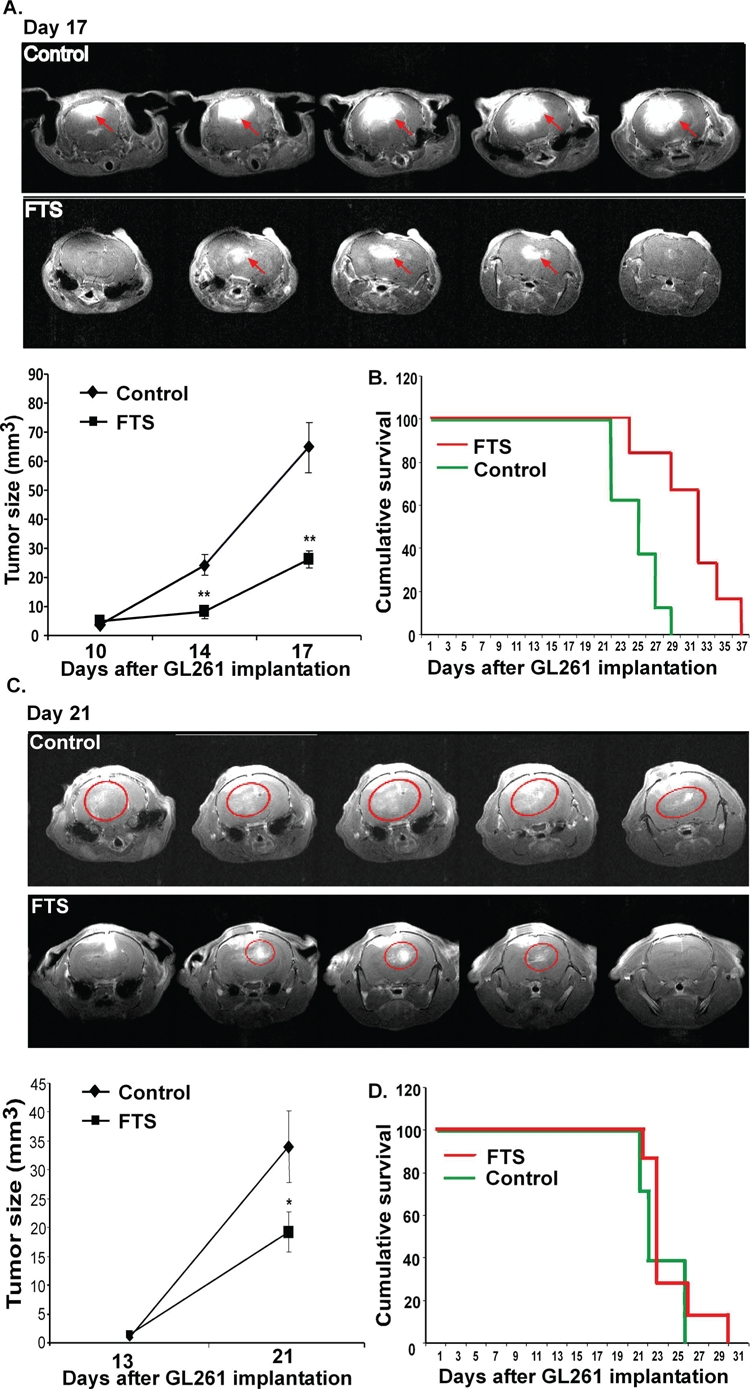Figure 5. FTS inhibits intracranial tumor growth and prolongs survival of intracranial immune-competent tumor-bearing mice but not of the tumor-bearing nude mice.

GL261 cells were implanted into the crania of C57bl/6 immune-competent and nude mice. Mice were treated and their survival was assessed as described in Results. Gadolinium-enhanced regions were defined and their volume (in mm3) and were accumulated. (A) Representative images of brains of immune-competent and nude mice are presented (top panel) (n=8 in each group). Statistical analysis of the results is presented as means ± SEM (bottom, left). * p<0.05, ** p<0.01 compared with vehicle-treated controls. (B) Survival of the intracranial tumor-bearing immune-competent mice (n=8 in each group) was monitored and Kaplan-Meier survival curves are presented; p=0.007, log-rank significance test. (C) Representative images of brains of nude mice are presented (top panel) (n=8 in each group). Statistical analysis of the results is presented as means ± SEM (bottom, left). ** p<0.01 compared with vehicle-treated controls. (D) Survival of the intracranial tumor-bearing nude mice (n=8 in each group) was monitored and Kaplan-Meier survival curves are presented; p=0.415, log-rank significance test.
